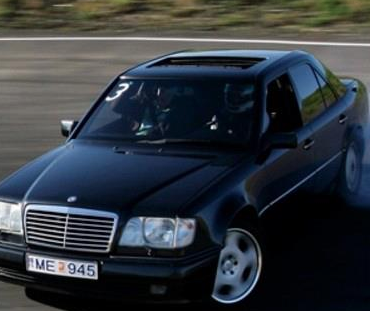The title of this blog is taken from the title of the brilliant review paper on the psychological and social effects of alcohol, cited in Wigmore on Alcohol as WOA60112, and is:
STEELE, C.M., and R.A. JOSEPHS, “Alcohol Myopia: Its Prized and Dangerous Effects”, American Psychologist, 45: 921-933, 1990 (1 table, 4 figures, 61 references)
The authors reviewed three main types of socially significant alcohol effects, which are:
-
Drunken Excess, the tendency of alcohol to make social actions more extreme, such as the shy person becoming a friendly outgoing partier or an intoxicated person having unprotected sex.
-
Drunken Self-Inflation, the effect of alcohol to inflate our egos and view ourselves through rose coloured glasses.
-
Drunken Relief, the ability of alcohol to relieve depression or anxiety.
The first effect of alcohol causes much of its socially destructive behaviour and the other 2 effects explain in part the addictive nature of alcohol consumption. According to the authors, alcohol is implicated in a large variety of antisocial and criminal behaviour, as listed in the following Table:
Alcohol is well known to impair perception and thought. It also reduces the ability to extract meaning from the cues and information that are perceived, resulting in what is referred to as “alcohol myopia”. Alcohol myopia, according to these researchers, is a state of shortsightedness in which the immediate aspects of the experience have a disproportionate effect on behaviour and emotion at the time. It is a case of alcohol causing you to miss the forest and only dimly see the trees. Another way of describing the effect of alcohol may be that it causes a sort of “tunnel vision”.
Alcohol myopia explains in part why the effects of alcohol are so variable among persons. Not only is the behaviour affected by the amount and speed at which alcohol is consumed but also on the particulars (i.e. cues) of the situation, as shown by the authors in 2 real life illustrations:
Drunken Behaviour at a Cocktail Party
Consider this real-life example. You have just had an angering argument with your landlord, the kind of argument that makes you want to take his head off on sight. As you are milling around at a neighborhood cocktail party that evening, you turn from the eggplant dip to the wine table and encounter him fact to face. If you are sober in this situation you should experience the kind of response conflict we are describing. The salient cue of his presence will provoke in you an impulse to tell him off on the spot, yet with just an instance’s further consideration you realize that if you do so, this you will cause a terrible scene, embarrass yourself, and maybe even get you evicted the next day. Thus, you grit your teeth and hold in your tirade. Our point is that this kind of situation – characterized by such conflicting response pressures – can trigger drunken excess. Thus, if you should encounter your landlord after being three or four drinks into the evening, his presence, as a salient cue, should still provoke your anger but the myopia that alcohol causes should reduce your access to the negative consequences of telling him off. As a result, a legendary scene erupts and the next day you are homeless.
Crying in your Beer
Let us pursue an example. You get home from work one day worried about the poor raise you received and the continuing atmosphere of under-appreciation you suffer. Because it is hot outside you fix yourself a tall gin and tonic to drink while you watch the nightly news. As the alcohol takes hold and as your processing resources become more occupied with the news broadcast, you will probably experience a fading away of your worries, but if you should decide to turn off the news and sit quietly, that same tonic might cause you to cry into it.
Alcohol myopia could also explain why so much drunk driving takes place and it may be that it causes the driver to just focus on getting home by the quickest route (i.e. driving) and not on the possible consequences of that action. It is an excellent well-written, thought-provoking review and explains, with little scientific jargon, the effects of alcohol on behaviour. I would recommend it to anyone.
ALCOHOL WORKSHOPS
I will be presenting 2 half day workshops at the 59th Conference of the Canadian Society of Forensic Science in Gatineau (just across the river from Ottawa with a beautiful view of the Parliament buildings and the Victorian masterpiece, the Parliamentary Library). It is a joint meeting with the Standards Council of Canada and will be held at the Sheraton Four Points Hotel on May 5th – 9th, 2014. The theme of the conference is “Quality Assurance in Forensic Testing”.
I will be the main presenter of 2 half-day workshops on Monday May 5th 2014. They are the Forensic Aspects of Breath Alcohol Testing (principles, mouth alcohol effect, blood/breath alcohol ratio, impairment of driving ability etc) and the Forensic Aspects of Blood Alcohol Testing (alcohol swabs, storage and preservatives, postmortem BAC, blackouts etc). The workshops are open to anyone including lawyers and students. Further information and registration is available at www.csfs.ca and click on the 2014 Conference announcement and also by visiting the new website. Also, American participants will save about 10% as the Canadian dollar at this time is worth about 90 cents (US).
If you do attend, don’t forget to bring your copy of WOA with you, that I may autograph personally!




